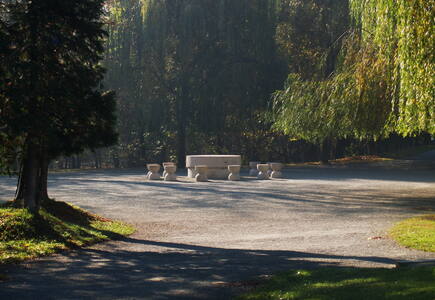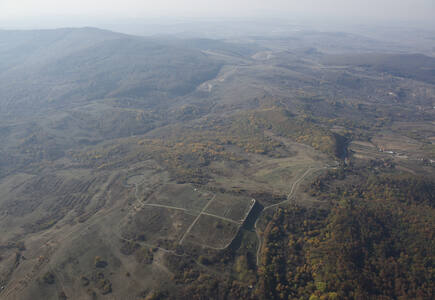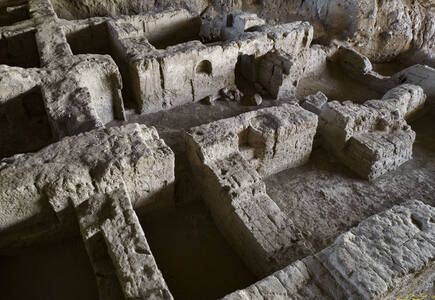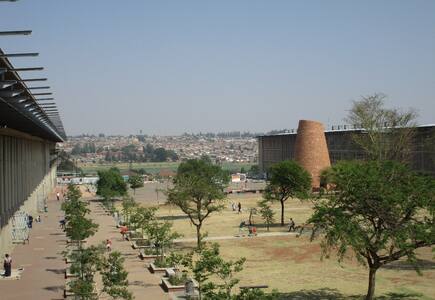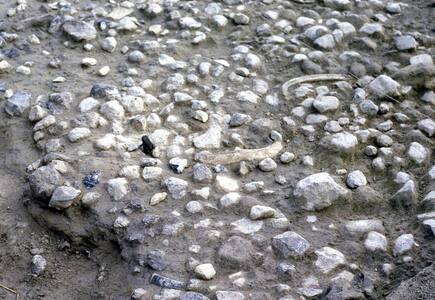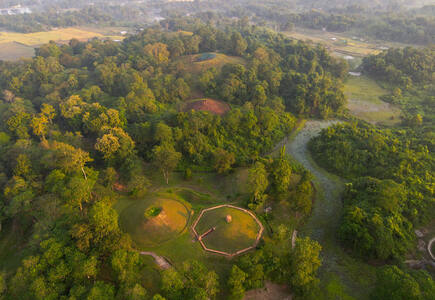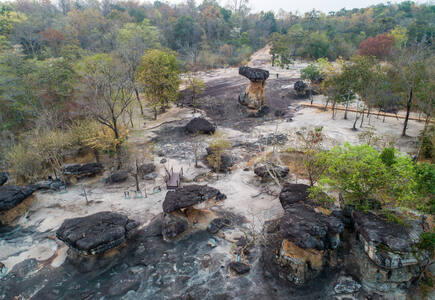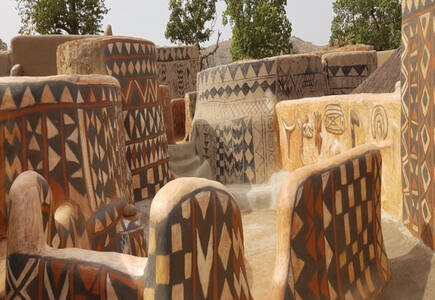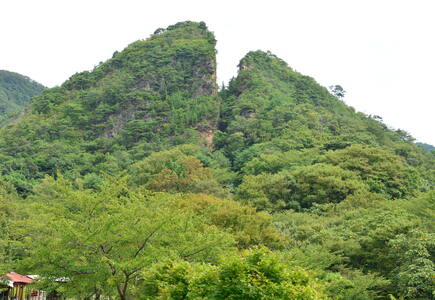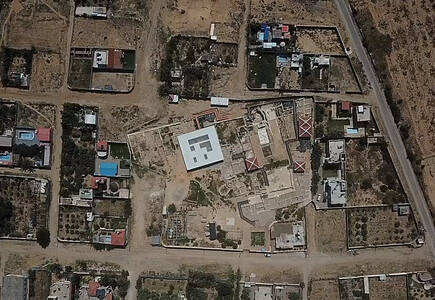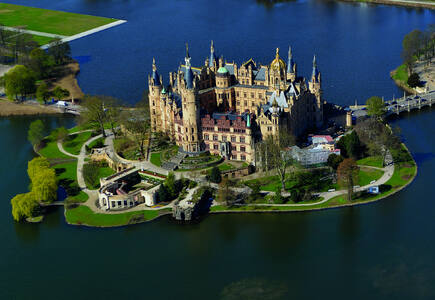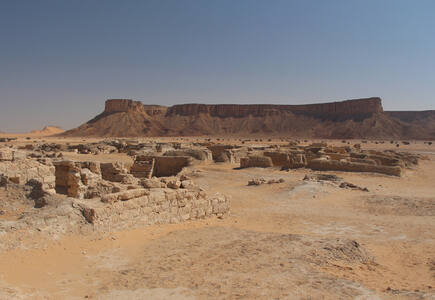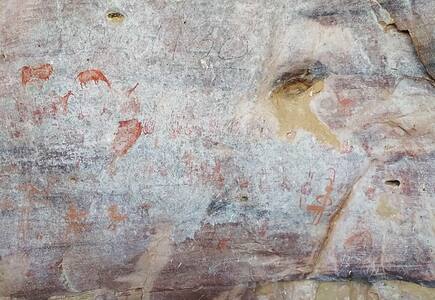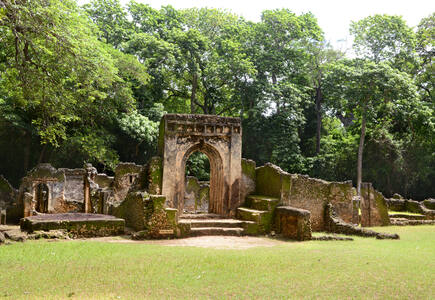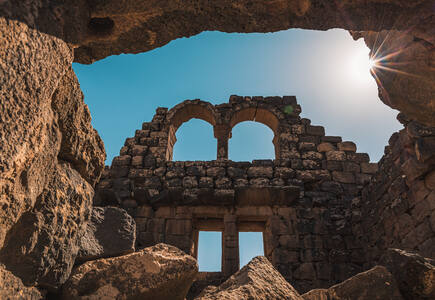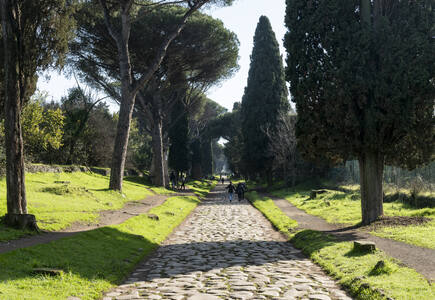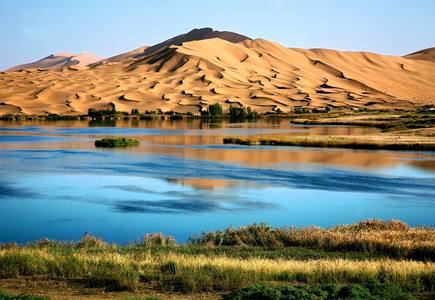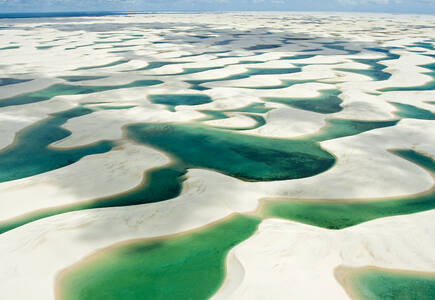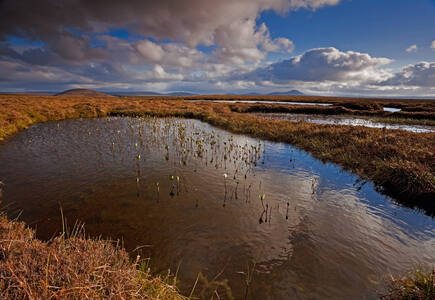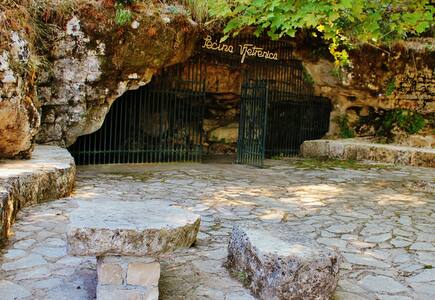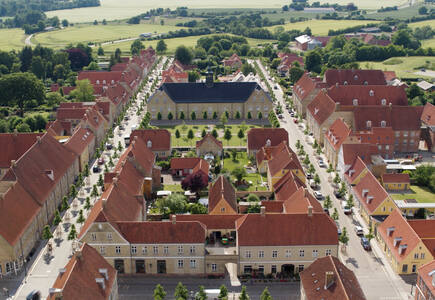New Inscribed Properties
Cultural properties
Beijing Central Axis: A Building Ensemble Exhibiting the Ideal Order of the Chinese Capital
Running north to south through the heart of historical Beijing, the Central Axis consists of former imperial palaces and gardens, sacrificial structures, and ceremonial and public buildings. Together they bear testimony to the evolution of the city and exhibits evidence of the imperial dynastic system and urban planning traditions of China. The location, layout, urban pattern, roads and design showcase the ideal capital city as prescribed in the Kaogongji, an ancient text known as the Book of Diverse Crafts. The area, between two parallel rivers, has been settled for about 3,000 years, but the Central Axis itself originated during the Yuan Dynasty (1271-1368) that established its capital, Dadu, in the northern part. The property also features later historical structures built during the Ming Dynasty (1368-1644) and improved during the Qing Dynasty (1636-1912).
Brâncuși Monumental Ensemble of Târgu Jiu
Austere, contemplative, yet accessible, the monumental ensemble of Târgu Jiu was created in 1937-1938 by Constantin Brâncuși, an influential pioneer of abstract sculpture, to commemorate those who died defending the city during the First World War. Located in two parks connected by the narrow Avenue of Heroes, the property includes the monumental ensemble of sculptural installations and the pre-existing Church of the Holy Apostles Peter and Paul, located on the axis. The remarkable fusion of abstract sculpture, landscape architecture, engineering, and urban planning conceived by Constantin Brâncuși goes far beyond the local wartime episode to offer an original vision of the human condition.
Cultural Landscape of Kenozero Lake
Located in Kenozero National Park in the north-western area of the European region of the Russian Federation, the property depicts the local cultural landscape that evolved here from the 12th century, following the gradual spread of the Slavic population. It incorporates a number of traditional rural settlements with vernacular wooden architecture. The cultural landscape of Kenozero reflects the communal management of agriculture and nature that developed through the fusion and interaction of the Finno-Ugric forest culture and the Slavic field culture. Wooden churches and other religious buildings, originally decorated with painted ceilings, or “heavens”, are the key social, cultural, and visual landmarks of the area. Their spatial organization, together with sacred sites and symbols, highlight the residents’ spiritual connection with this environment.
Frontiers of the Roman Empire – Dacia
From 500 BCE on, the Roman Empire extended its territory across parts of Europe and North Africa until its frontier totaled some 7,500 kilometres by the 2nd century. The Romanian segment, the Dacian Limes, was operational from 106 to 271 CE. The property comprises 277 component parts and represents the longest, most complex land border of a former Roman province in Europe. Traversing diverse landscapes, it is defined by a network of individual sites that include legionary fortresses, auxiliary forts, earthen ramparts, watch towers, temporary camps and secular buildings. Dacia was the only Roman province entirely north of the Danube River. Its frontier protected it from ‘barbarian’ populations and controlled access to valuable gold and salt resources.
Hegmataneh
Human Rights, Liberation and Reconciliation: Nelson Mandela Legacy Sites
The serial property represents the legacy of the South African struggle for human rights, liberation and reconciliation. It consists of fourteen component parts located around the country, all related to South Africa’s political history in the 20th century. The parts include the Union Buildings (Pretoria), now the official seat of government; the Sharpeville Sites, commemorating the massacre of 69 people protesting the unjust Pass Laws; and The Great Place at Mqhekezweni, a site symbolic of traditional leadership where Nelson Mandela lived as a young man. These places reflect key events linked to the long struggle against the apartheid state; Mandela’s influence in promoting understanding and forgiveness; and belief systems based on philosophies of non-racialism, Pan-Africanism and ubuntu, a concept that implies humanity is not solely embedded in an individual.
Melka Kunture and Balchit: Archaeological and Palaeontological Sites in the Highland Area of Ethiopia
Located in the Upper Awash Valley in Ethiopia, the serial property is a cluster of prehistoric sites that preserve archaeological and palaeontological records – including footprints – that testify to the area’s occupation by the hominin groups from two million years ago. The sites, situated about 2,000 to 2,200 metres above sea level, yielded Homo erectus, Homo heidelbergensis and archaic Homo sapiens fossils, documented in well-dated strata in association with various tools made from volcanic rocks. The cultural sequence includes four consecutive phases of the Oldowan, Acheulean, Middle Stone Age and Late Stone Age techno-complexes. Fragments of palaeo-landscapes, preserved buried under volcanic and sedimentary deposits with fossil fauna and flora, allow reconstruction of the high-mountain ecosystem of the Ethiopian Highlands during the Pleistocene. Conclusions can thus be drawn on the adaptation of hominin groups to the challenges and climatic conditions of high altitudes.
Moidams – the Mound-Burial System of the Ahom Dynasty
Set in the foothills of the Patkai Ranges in eastern Assam, the property contains the royal necropolis of the Tai-Ahom. For 600 years, the Tai-Ahom created moidams (burial mounds) accentuating the natural topography of hills, forests and water, thus forming a sacred geography. Banyan trees and the trees used for coffins and bark manuscripts were planted and water bodies created. Ninety moidams – hollow vaults built of brick, stone or earth – of different sizes are found within the site. They contain the remains of kings and other royals together with grave goods such as food, horses and elephants, and sometimes queens and servants. The Tai-Ahom rituals of “Me-Dam-Me-Phi” and “Tarpan” are practiced at the Charaideo necropolis. While moidams are found in other areas within the Brahmaputra Valley, those found at the property are regarded as exceptional.
Phu Phrabat, a testimony to the Sīma stone tradition of the Dvaravati period
The property illustrates the Sīma stone tradition of the Dvaravati period (7th-11th centuries CE). While sacred boundary markers for areas of Theravada Buddhist monastic practice vary in materials, extensive use of stones is found only in the Khorat Plateau region in Southeast Asia. Buddhism’s arrival in the 7th century led to an increase in the erection of Sīma stones throughout the region for over four centuries. The Phu Phrabat Mountain area preserves the largest corpus in the world of in situ Sīma stones from the Dvaravati period, testifying to the tradition that once prevailed in the region. The scale of Sīma stone erection and rock shelter modification has transformed the natural landscape into a religious centre, and rock paintings on surfaces of 47 rock shelters are the physical evidence of human occupation over two millennia.
Royal Court of Tiébélé
The property is an earthen architectural complex established since the 16th century that bears testimony to the social organization and cultural values of the Kasena people. Enclosed by a protective compound wall, the Royal Court consists of a set of buildings arranged in distinct concessions separated by walls and passageways leading to ceremonial and gathering places outside the compound. Built by the men of the Royal Court, the huts are then adorned with decorations of symbolic significance by the women, who are the sole guardians of this knowledge and ensure this tradition is kept alive.
Sado Island Gold Mines
The Sado Island Gold Mines is a serial property located on Sado Island, some thirty-five kilometres west of the Niigata Prefecture coast. It is formed of three component parts illustrative of different unmechanised mining methods. Sado Island is of volcanic origin and features two parallel mountain ranges stretching from southwest to northeast and separated by one alluvial plain, the Kuninaka Plain. Gold and silver deposits were formed by the rising of hydrothermal water close to the land surface and forming veins in the rock; tectonic activity first submerged the surface deposits to the seabed, which was later raised again by tectonic movements. Placer deposits were exploited in Nishimikawa Area, located on the north-western side of the Kosado Mountains. In addition, the weathering of the volcanic rock exposed ore veins, which were mined underground at the land surface and deep underground in the Aikawa-Tsurushi Area, at the southern end of the Osado Mountains range. Mostly tangible attributes reflecting mining activities and social and labour organisation are preserved as archaeological elements, both above and below ground, and landscape features.
Saint Hilarion Monastery/ Tell Umm Amer
Situated on the coastal dunes in Nuseirat Municipality, the ruins of Saint Hilarion Monastery/ Tell Umm Amer represent one of the earliest monastic sites in the Middle East, dating back to the 4th century. Founded by Saint Hilarion, the monastery began with solitary hermits and evolved into a coenobitic community. It was the first monastic community in the Holy Land, laying the groundwork for the spread of monastic practices in the region. The monastery occupied a strategic position at the crossroads of major trade and communication routes between Asia and Africa. This prime location facilitated its role as a hub of religious, cultural, and economic interchange, exemplifying the flourishing of monastic desert centres during the Byzantine period.
Schwerin Residence Ensemble
Established on the shores of Lake Schwerin in northeast Germany, the Schwerin Residence Ensemble is an architectural and landscape ensemble, which fits very precisely within the context of the emergence and development of the historicist style in Europe. Created for the most part in the 19th century in what was then the capital of the Grand Duchy of Mecklenburg-Schwerin in northeast Germany, the property comprises 38 elements, including the Grand Duke’s Residence Palace and manor houses, cultural and sacred buildings, and the Pfaffenteich ornamental lake. But it also fulfils all the functions required of a ducal capital in terms of administration, defence, service infrastructure, transportation, prestige and cultural activities, with parks, canals, ponds and lakes, and public spaces. The buildings form an exceptional architectural ensemble, ranging from Neo-Classical to Neo-Baroque and Neo-Renaissance and even includes in certain cases references to the more regional Neo-Renaissance "Johann-Albrecht" style, with influences from the Italian Renaissance.
The Archaeological Heritage of Niah National Park’s Caves Complex
The Cultural Landscape of Al-Faw Archaeological Area
Lying at a strategic point of the ancient trade routes of the Arabian Peninsula, the property was abruptly abandoned around the 5th century CE. Nearly 12,000 archaeological remains have been found, spanning from prehistoric times to the Late pre-Islamic era, testifying to the successive occupation of three different populations and their adaptation to the evolving environmental conditions. Archaeological features include the Palaeolithic and Neolithic tools of early people, tapered structures, cairns and circular constructions, the sacred mountain of Khashm Qaryah, rock carvings, funerary tumuli and cairns in the valley, forts/caravanserai, the oasis and its ancient water management system, and the vestiges of the city of Qaryat al-Faw.
The Emergence of Modern Human Behaviour: The Pleistocene Occupation Sites of South Africa
This serial property contributes to the understanding of the origin of behaviourally modern humans, their cognitive abilities and cultures, and the climatic transitions that they survived. It is composed of three dispersed archaeological sites, Diepkloof Rock Shelter, Pinnacle Point Site Complex, and Sibhudu Cave, located in the Western Cape and KwaZulu-Natal provinces of South Africa. These sites provide the most varied and best-preserved record known of the development of modern human behaviour, reaching back as far as 162,000 years. Symbolic thought and advanced technologies are exemplified by evidence of ochre processing, engraved patterns, decorative beads, decorated eggshells, advanced projectile weapons and techniques for toolmaking, and microliths.
The Historic Town and Archaeological Site of Gedi
Surrounded by a remnant coastal forest, away from the coastline, the abandoned city of Gedi was one of the most important Swahili cities on the East African coast from the 10th to 17th centuries. During this period, it was part of a complex and international network of trade and cultural exchanges that crossed the Indian Ocean, linking African coastal centres with Persia and other areas. The opulent settlement is clearly delineated by walls and features remains of domestic, religious, and civic architecture, and a sophisticated water management system. It strongly represents the characteristics of Swahili architecture and town planning, utilising materials such as coral rag, coral and earth mortar and wood.
Umm Al-Jimāl
The property is a rural settlement in northern Jordan that developed organically on the site of an earlier Roman settlement around the 5th century CE and functioned until the end of the 8th century CE. It preserves basaltic structures from the Byzantine and Early Islamic periods that represent the local architecture style of the Hauran region, with some earlier Roman military buildings re-purposed by later inhabitants. The settlement formed part of a broader agricultural landscape that included a complex water catchment system, which sustained agriculture and animal herding. The earliest structures uncovered at Umm Al-Jimāl date back to the 1st century CE, when the area formed part of the Nabataean Kingdom. A rich epigraphic corpus in Greek, Nabataean, Safaitic, Latin and Arabic uncovered on the site and spanning many centuries provides insights into its history, and sheds light on the changes in its inhabitants’ religious beliefs.
Via Appia. Regina Viarum
More than 800 kilometres long, the Via Appia is the oldest and most important of the great roads built by the Ancient Romans. Constructed and developed from 312 BCE to the 4th century CE, it was originally conceived as a strategic road for military conquest, advancing towards the East and Asia Minor. The Via Appia later enabled the cities it connected to grow and new settlements emerged, facilitating agricultural production and trade. This property, composed of 19 component parts, is a fully developed ensemble of engineering works, illustrating the advanced technical skill of Roman engineers in the construction of roads, civil engineering projects, infrastructure and sweeping land reclamation works, as well as a vast series of monumental structures including, for example, triumphal arches, baths, amphitheatres and basilicas, aqueducts, canals, bridges, and public fountains.
New Inscribed Properties
Natural properties
Badain Jaran Desert - Towers of Sand and Lakes
Located in the Alashan Plateau in the hyper-arid and temperate desert region of northwestern China, the Badain Jaran Desert is a meeting point for three sandy regions of China and is the country’s third largest desert and second largest drifting desert. The property stands out with its high density of mega-dunes, intersected with inter-dunal lakes. It displays spectacular ongoing geological and geomorphic features of desert landscapes and landforms which may well be unparalleled. Noteworthy features, among others, include the world’s tallest, stabilized sand mega-dune (relative relief of 460 m); the highest concentration of inter-dunal lakes; and the largest expanse of so-called singing sands (describing the resonance caused for example by wind moving dry and loose sand) and wind-eroded landforms. The varied landscape also results in a high level of habitat diversity, and hence of biodiversity.
Lençóis Maranhenses National Park
The property is located in northeastern Brazil, on the east coast of Maranhão, in a transition zone between three Brazilian biomes: Cerrado, Caatinga and Amazon. More than half of its area consists of a white coastal dune field with temporary and permanent lagoons. Beyond its important role in biodiversity conservation, the park boasts globally significant aesthetic and geological/geomorphological values. Along an 80 km coastline, with beaches followed by plains, the prevailing winds shape the dunes into long chains of barchans, filled in the rainy season to create lagoons of various colours, shapes, sizes and depths. The property reveals its best scenery when the lagoons reach their maximum volume, creating rare beauty. The vast expanse of both stable and shifting dunes, the largest in South America, presents remarkable evidence of the evolutionary progression of coastal dunes throughout the Quaternary period.
The Flow Country
The serial property, located in the Highland Region of Scotland, is considered the most outstanding example of an actively accumulating blanket bog landscape. This peatland ecosystem, which has been accumulating for the past 9,000 years, provides a diversity of habitats home to a distinct combination of bird species and displays a remarkable diversity of features not found anywhere else on Earth. Peatlands play an important role in storing carbon and the property’s ongoing peat-forming ecological processes continue to sequester carbon on a very large scale, representing a significant research and educational resource.
Vjetrenica Cave, Ravno
Located in the Dinaric mountain range, the property stands out with its remarkable cave biodiversity and endemicity. Known since antiquity, the well-conserved representation of karst topography is one of the world’s most important biodiversity hotspots for cave-dwelling fauna, notably subterranean aquatic fauna. It is home to a number of globally threatened vertebrate species, and the only subterranean tubeworm in the world, as well as a diversity of plant species endemic to the Balkans. Additionally, several of the species found in Vjetrenica Cave are tertiary and pre-tertiary relict species, meaning that many of them can be considered living fossils whose closest relatives went extinct a long time ago.
New Inscribed Properties
Mixed properties
Te Henua Enata – The Marquesas Islands
Located in the South Pacific Ocean, this mixed serial property bears an exceptional testimony to the territorial occupation of the Marquesas archipelago by a human civilisation that arrived by sea around the year 1000 CE and developed on these isolated islands between the 10th and the 19th centuries. It is also a hotspot of biodiversity that combines irreplaceable and exceptionally well conserved marine and terrestrial ecosystems. Marked by sharp ridges, impressive peaks and cliffs rising abruptly above the ocean, the landscapes of the archipelago are unparalleled in these tropical latitudes. The archipelago is a major centre of endemism, home to rare and diverse flora, a diversity of emblematic marine species, and one of the most diverse seabird assemblages in the South Pacific. Virtually free from human exploitation, Marquesan waters are among the world’s last marine wilderness areas. The property also includes archaeological sites ranging from monumental dry-stone structures to lithic sculptures and engravings.
Significant modifications to the boundaries
Cultural properties
Moravian Church Settlements
This transnational serial property comprises four congregational settlements in four countries representing the transnational scope and consistency of the international Moravian community as a global network of the Moravian Church: Christiansfeld (Denmark), Herrnhut (Germany), Gracehill (United Kingdom of Great Britain and Northern Ireland) and Bethlehem (United States of America). These settlements were established according to overarching planning principles that reflected the ideals of the Moravian Church, as expressed in their plans and democratic organisation. Each architectural ensemble bears witness to the Moravian Church’s vision of a unified, coherent urban design, inspired by the concept of an “ideal city” developed by the Church during its formative phase in the 18th and beginning of the 19th enturies. Distinctive Moravian buildings include a particular type of Gemeinhaus (congregation building), church, choir houses, as well as a nearby God’s Acre (cemetery). Each settlement has its own architectural character based on an original Moravian Church Civic Baroque style but adapted to local conditions. Present today in each component part is an active congregation whose continuation of traditions forms a living Moravian heritage.
Significant modifications to the boundaries
Natural properties
Migratory Bird Sanctuaries along the Coast of Yellow Sea-Bohai Gulf of China
The Migratory Bird Sanctuaries along the Coast of Yellow Sea-Bohai Gulf of China is a serial extension of the property of the same name already inscribed on the World Heritage List. As part of the world’s largest intertidal wetland system, this area within the Yellow Sea Ecoregion supports crucial habitats for birds migrating on the East Asian-Australasian Flyway which spans some 25 countries from the Arctic to South-East Asia and Australasia. The wetlands serve a unique ecological function as indispensable stopover sites for many millions of waterbirds and represent a significant example of the shared natural heritage embodied in migratory birds.
Views
World Heritage List statistics

























